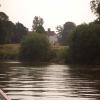
| Torksey Junction | 5 miles, 2½ furlongs | |
| Torksey Castle | 4 miles, 7 furlongs | |
| Torksey Railway Bridge | 4 miles, 5 furlongs | |
| Marton | 3 miles, ¼ furlongs | |
| Littleborough Ford | 1 mile, 6½ furlongs | |
| Knaith | ||
| Gainsborough Railway Bridge | 3 miles, 7¼ furlongs | |
| Gainsborough Road Bridge | 5 miles | |
| Gainsborough Floating Pontoon | 5 miles, 1¾ furlongs | |
| Morton | 6 miles, 6 furlongs | |
| Walkerith | 8 miles, 2¾ furlongs | |
Why not log in and add some (select "External websites" from the menu (sometimes this is under "Edit"))?
Mouseover for more information or show routes to facility
Nearest water point
In the direction of Keadby Junction
In the direction of Cromwell Lock Weir Exit
Nearest rubbish disposal
In the direction of Keadby Junction
In the direction of Cromwell Lock Weir Exit
Nearest chemical toilet disposal
In the direction of Keadby Junction
In the direction of Cromwell Lock Weir Exit
Nearest place to turn
In the direction of Keadby Junction
In the direction of Cromwell Lock Weir Exit
Nearest self-operated pump-out
In the direction of Cromwell Lock Weir Exit
No information
CanalPlan has no information on any of the following facilities within range:boatyard pump-out
Wikipedia has a page about Knaith
Knaith is a village and civil parish about 3 miles (5 km) south of the town of Gainsborough in the West Lindsey district of Lincolnshire, England. The population of the civil parish at the 2011 census was 335.
Knaith is listed in the 1086 Domesday Book with three households, a meadow of 25 acres (10 ha) and 26 acres (11 ha) of woodland. The Lord of the property was in both 1066 and 1086 was the St Mary's Abbey of Stow, and the Tenant in Chief in 1086 was the Bishop of Lincoln (St Mary). There are earthwork remains of Knaith medieval village. These include a medieval deer park created in the early 13th century. South of Knaith Hall are garden remains from the 16th or 17th century, and the remains of an 18th-century deer park.
Knaith Hall is a red-brick 15th-century building with some timber framing and is now Grade II listed.
The Church of England parish church of St Mary is 11th century, with alterations from the 14th and 18th, and an 1894 restoration. It is a Grade II* listed building. St Mary's might be the transept or nave of the church of Heynings Priory, a Cistercian nunnery founded probably around 1150.































